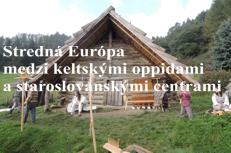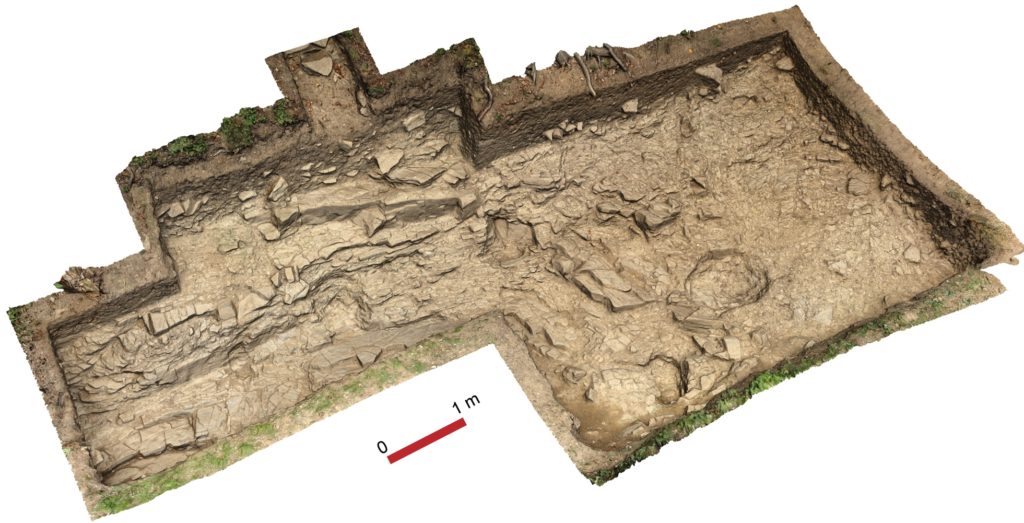Research team: PhDr. Gabriel Fusek, CSc., Mgr. Michal Holeščák, Mgr. Andrea Slaná, PhD., Mgr. Zuzana Staneková
Year of excavation: 2016 – 2018
Method of excavation: systematic, for scientific and documentation purposes
Type of locality: hillfort
Dating: young and late Bronze Age – Lusatian culture, young and late La Tène period – Púchov culture, Early Medieval Age – Great Moravian period, Modern Age – 20th century
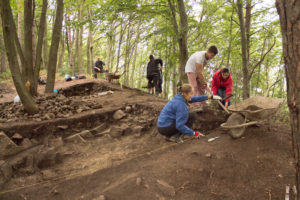
Current archaeological research of hillfort Veľký vrch in Divinka is made by Archaeological Institute of SAS in Nitra with cooperation with Museum of Považie in Žilina since year 2013. From year 2016, locality is researched as part of a project APVV-15-0330.
In year 2016, excavations were conducted on three places. First location is called Koleso, positioned on the steep slope in the suburbium. Here, stratification of layers containing big number of Lusatian pottery shards was researched. Second location, Veľké Salašky, is situated on the access road from Váh valley. Here was excavated mound-like structure of earth and stone, which served as a foundation for turret or watchtower guarding the gate. Layers of destructed object overlay the road, which was carved in stone. Gate can be dated only by conducting the radiocarbon dating. Edge of the mound-like structure had been also damaged by a dugout shepherd shelter. Third locality was positioned in the peak section of the hillfort. Two ditches were made to research the rampart and its surroundings. Cultural layer contained vast number of pottery shards from different periods of settlement. Noticeable is the Great Moravian period, in which the iron artefacts can be dated.
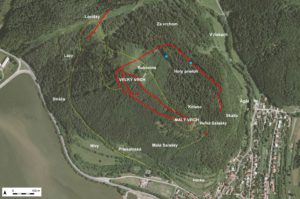
Terrain excavations of the hillfort in 2017 continued the previous research. At part Veľké Salašky continued the unearthing of the layers covering the original entry path. Results of the radiocarbon dating of the collected samples of the burnt wood were analysed. They showed that the gate with adjacent fortification structure were built in the 9th century. This dating was proven also by a find of iron arrowhead laying on the level of the former path. Essential result of the research of the rampart in the peak area of the hillfort was the discovery of two different phases of the wall construction. According to the analysis of the coals found in the construction of the older phase, it was initially built by the people of Lusatian Culture during the Late Bronze Age. Arrowhead found on the top of its destruction layer shows that the second phase was built during the Great Moravian Period. In the ditches around the rampart were uncovered settlement objects from both of these chronological periods. In the upper settlement layers were found also ceramic shards belonging to the Púchov Culture. From the settlement objects, most interesting was found of the stone foundation of the building from the Great Moravian Period, with small stone mill intact in its´ interior.
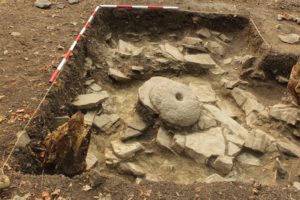
Except the systematic excavations, a rescue excavations were concluded at the site of the future touristic watchtower at Malý Vrch. Upper layer which lied right on the bedrock contained artefacts of the Lusatian Culture, Púchov Culture and Great Moravian Period finds were only scarce. Also, a ditch through a terrain depression in the vicinity of the building site was concluded. It showed, that the depression is remain of German bunker from the World War II.
In the year 2018 continued excavations of the object guarding the entry to the hillfort from the Váh valley. More remains of the gate and part of original road were unearthed. Set of samples sent for radiocarbon dating specified the dating of its building in the last phase of the Great Moravian Period. The find situation was partially disturbed in the half of the 20th century by a shepards shelter.
In the location Lovišky, profile of the rampart was documented, but the object by itself wasn´t possible to date.
3D photogrammetry of the reamains of the Great Moravian Period gate.



